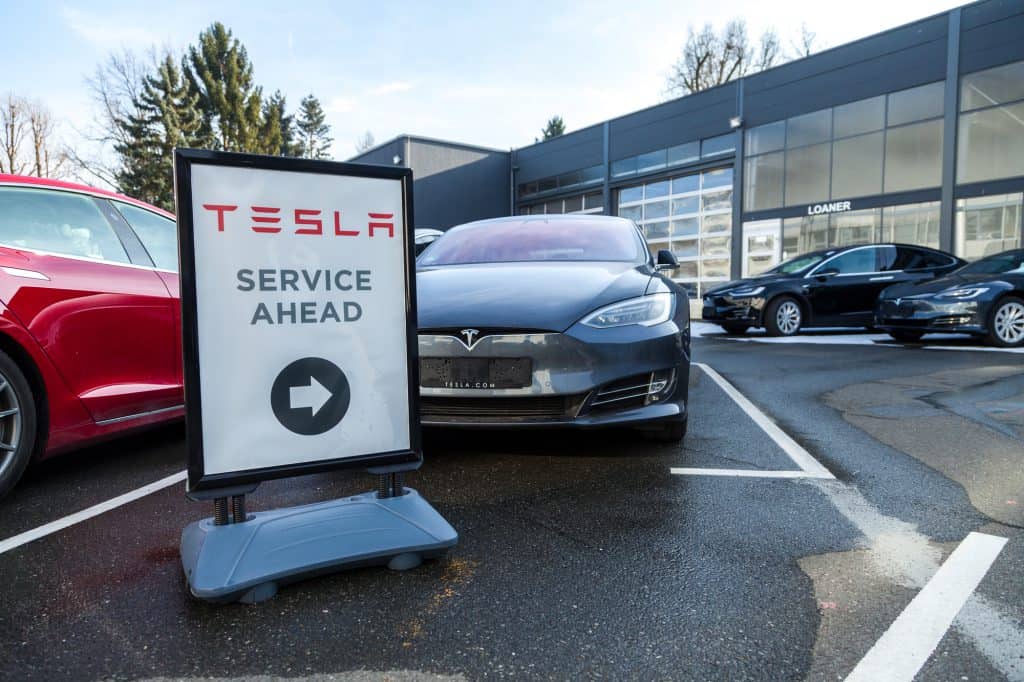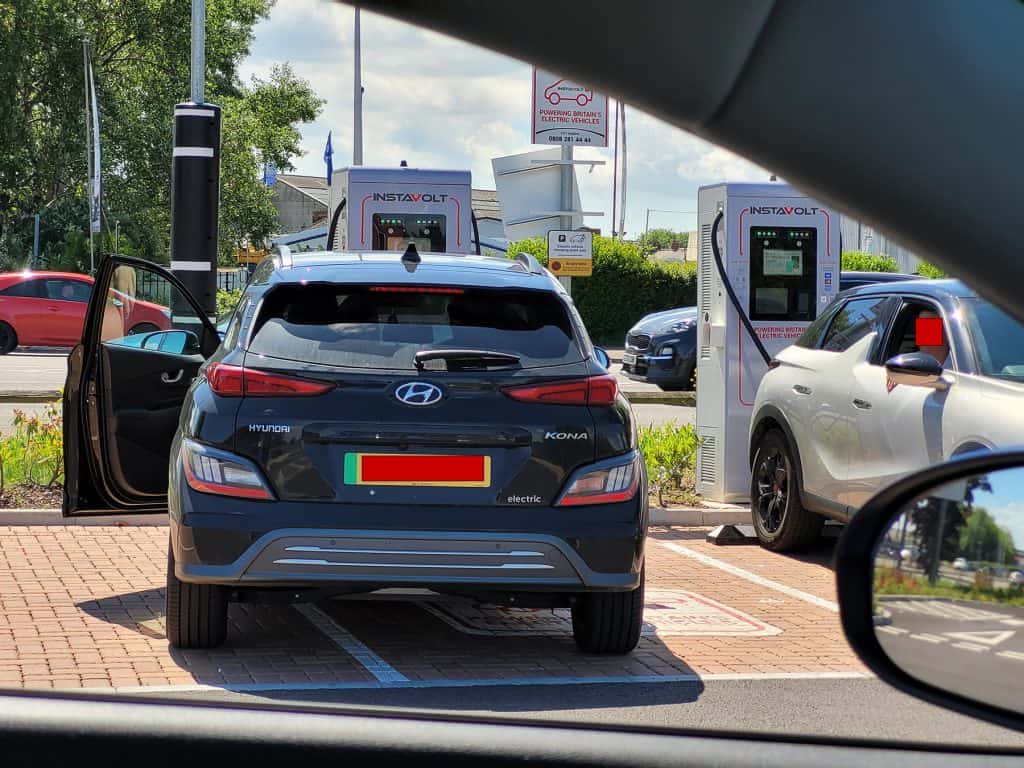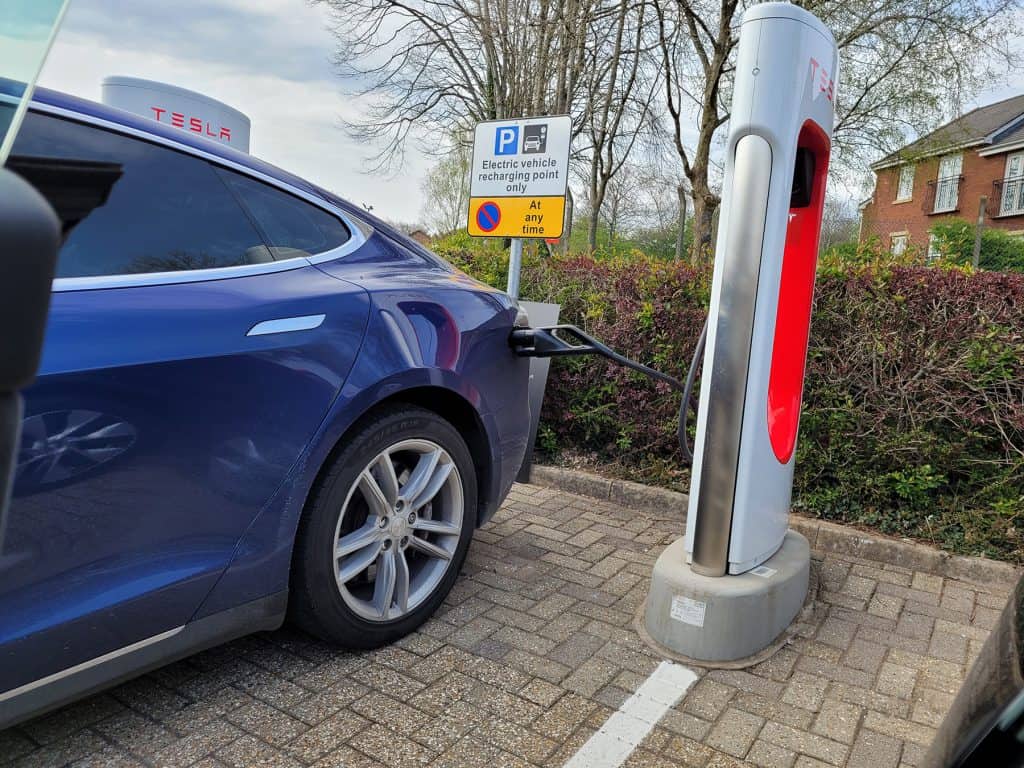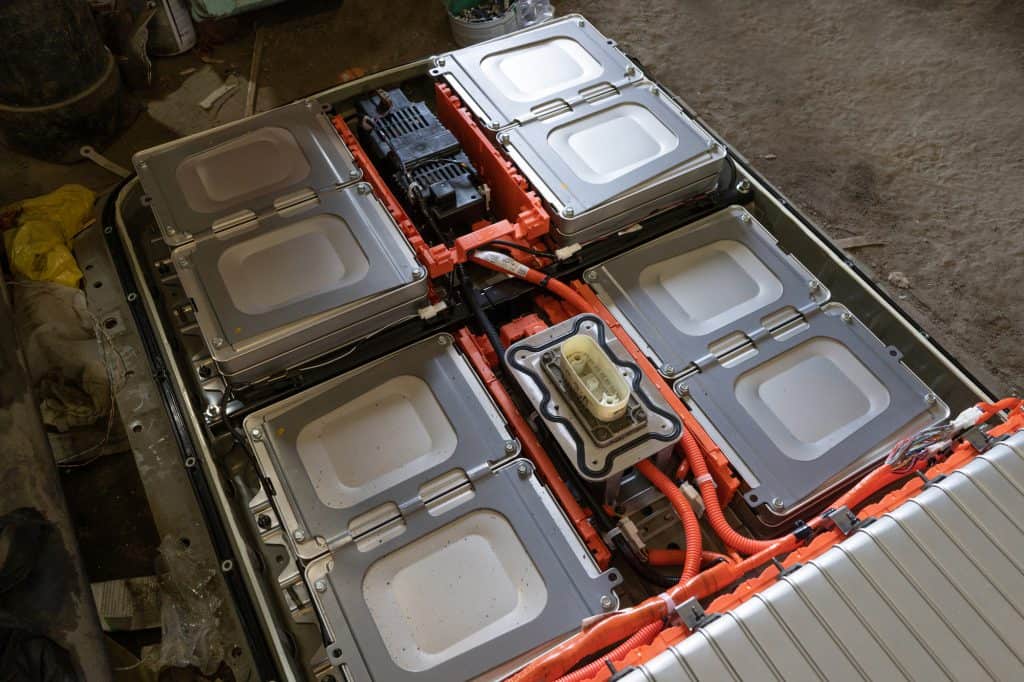As we seen in our ‘how do electric cars work?’ article, EVs work completely differently to conventional, fossil-fuel powered cars. They are also starting to rise up and disrupt the car market like never before. They’re definitely interesting, so what are the advantages and disadvantages of electric cars? Let’s explore 15 advantages and 11 disadvantages.
15 Advantages
1. Zero tailpipe emissions
Electric cars are driven by stored-up electrical power in the battery pack, which is applied by the motor controller to the motor and ultimately the wheels. This process produces no tailpipe emissions at all, unlike fossil fuel cars that produce lots of tailpipe emissions! So the average of 125g of CO2 that a gasoline car produces each kilometre is saved in an EV.
Plus it’s not just greenhouse gas emissions that are saved: more than a third of Americans live in areas where air pollution exceeds at least one Government-set air quality level. This is caused partly by various harmful gases and compounds coming out of vehicle exhausts, which again does not happen with an electric car.
So by having no tailpipe emissions, both greenhouse gas emissions and air quality are improved upon.
2. No more gas pumps! Saving you money every journey

Not having to pump gasoline into your car is naturally a nice benefit, since it’s not a clean compound to be so close to regularly. When pumping fuel, you’re exposed to a few harmful chemicals which can increase the risk of cancer and respiratory illness:
- Benzene
- Toluene
- Ethylbenzene
- Xylene
None of that when using electric car charging points! Plus there’s noticeable cost savings: journeys are much cheaper per mile/kilometre with electric. A fuelling cost article we done before found that a purely electric car (the Chevy Bolt) costs $0.92 for a 25 mile journey. This compares to $2.51 in a Ford Focus gasoline car.
3. Can charge up at home, work, or when travelling
Whilst you can use public charging stations to charge up your EV (just like using gas stations for a gasoline car), you can also charge up:
- At home: either via a standard power outlet (albeit this is very slow), or a charging station you have installed at your home. This can cost anything from $1,000-$3,000+ and it’s very convenient to be able to charge your electric car overnight whilst you sleep!
- At work: Various offices and workplaces have taken up Government support to install EV charging points in office car parks. An increasing number of these are rapid DC charging points too.
The number of public charging stations is rising all the time, too. American has seen double the number of charging points compared to 2014, whilst Europe has seen 4-10x as many charging points in that time frame!
4. Reduced national reliance on gasoline/petroleum
With OPEC trying to jack up petroleum/oil prices as much as they can, countries that can reduce their reliance in petroleum will be in a stronger position. Electric cars help them do just this, too! Electricity can be generated from a range of sources, including renewable energy like wind and solar power. Hence the overall energy profile for countries becomes more balanced the more that we move to electric cars. As the US’ Energy.gov puts it:
The U.S. used nearly nine billion barrels of petroleum last year, two-thirds of which went towards transportation. Our reliance on petroleum makes us vulnerable to price spikes and supply disruptions. EVs help reduce this threat because almost all U.S. electricity is produced from domestic sources, including coal, nuclear, natural gas, and renewable sources.
5. Safe to drive
Electric cars have naturally had loads of safety testing performed on them, and have driven billions of miles on the roads so far. They are very safe to drive, often achieving the highest safety ratings available. There’s lots of safety devices in an EV, be it inside the motor controller, or the power management system in the battery pack.
The moment there’s a car accident, the high-voltage electrical power which propels the car forward will stop flowing as appropriate – and obviously the airbags function in the standard, expected way as well.
6. Purchasing costs falling
As we explore in our ‘Will Electric Cars Ever Come Down In Price?’ article, whilst electric cars have traditionally not been too cheap to purchase, this is starting to change now. This is because a big part of the price is the battery pack (as much as 40% of the overall MSRP car price), and these lithium-ion batteries are forecast to continue falling in price over the next decade.
It’s possible that electric cars will be cheaper than gasoline cars by 2021-2024, based on current lithium-ion battery trends. This would mean that EVs are cheaper to both run and purchase than conventional cars, giving very little reason not to own one!
7. Low maintenance

Many of the oils that you’re used to changing in a fossil fuel car (or are used to paying for during a scheduled service!) either aren’t needed in an electric car, or just don’t need to be changed!
Transmission fluid and engine oil are two examples of liquids which aren’t needed anymore in an electric car, since they don’t have a multi-gear transmission nor an engine.
Equally, EVs have regenerative braking which is where the brakes are used less in an electric car; instead, more of the electricity is redirected back to the battery pack when the car starts slowing down. This leads to much less brake pad wear, and some EVs simply don’t need a brake pad change during their usable lifetime.
8. Much quieter
A utopian future where roads are filled with electric cars would be a lot quieter. This is because the four main components of road noise is caused by:
- Internal combustion engine operation
- Wind passage noise (the noise of the wind hitting a moving car)
- Road surface noise
- Tire noise
(1), (2) and (4) are all quieter with electric cars, since the power and drive train is much quieter, and EVs are designed to be aerodynamic which reduces wind passage noise.
9. Car battery ranges much improved
Whilst the range of some electric cars a few years ago weren’t that big (such as the 2015 Nissan Leaf with 84 miles of range, or the 2015 BMW i3 with 81 miles), their range has increased by 15-25% each year. The 2019 Nissan Leaf now has a 151 mile range, with the BMW i3 2019 having a 153 mile range.
Also cars like the Kona Electric have a long range option with 279 miles (449 km) of range! So range anxiety has been massively reduced, if not eliminated, in the past few years.
10. 5 tonnes less CO2 emissions in their lifetime

Electric cars are known to be more efficient than fossil fuel cars on the roads, however some questions have been asked about their eco-friendly credentials when being manufactured.
Overall, however, electric cars produce a massive 5 tonnes (5,000kg) of fewer CO2 emissions over their usable lifespan. This is a massive saving, leading to substantially less ozone-layer depleting emissions than fossil fuel cars.
11. Safe to charge and use in water
A common question is whether electric cars are safe to charge and/or use in watery conditions, such as charging in heavy rain or driving through flood-type water. Thankfully both of these are fine:
- electric cars can be safely charged up when it’s raining. There’s various safety measures in place to prevent any risk to the driver, including the fact that high-voltage electric doesn’t flow until both the car and charging station have established as safe connection.
- EVs handle flood water well, better than conventional cars handle it. This is because there’s no engine to seize up, or pistons to get flooded. The main electric drivetrain and powertrain and all waterproofed, meaning they can function in relatively deep waters.
12. Instant driving feedback
Driving an electric car seems smoother and more responsive than normal. This is because full electric power can be given the moment the accelerator pedal is pressed, meaning that the wheels can start turning instantly.
Plus whilst gasoline cars only work well in certain engine RPM ranges, electric cars can have 100% of torque right away: again leading to an ‘instant driving’ type feeling.
13. Various grants/rebates
There are various Government programmes such as grants, rebates and subsidies available when purchasing an electric car. For example, America has a $7,500 federal tax credit on many EVs, along with various individual states that offer $2,000-$5,000 in further rebates.
Countries like Norway have various measures which mean that electric cars are often much cheaper to buy than gasoline cars, whilst the United Kingdom offers up to £2,500 ($3,182) off electric cars.
Check out your local region/country’s zero-emission policies, because they can offer various schemes to reduce the price of your green car.
14. Recharge times getting quicker

Whilst standard 7 kW (L2) car chargers take many hours to charge an electric car up, the support for rapid DC (L3) chargers is growing. This can mean anything from 50 kW – 350 kW in charging speeds, which can charge a can up to 80% in as little as 10-15 minutes.
These rapid DC chargers are thankfully being installed in growing levels. Europe has seen 10x growth in them since 2014, whilst companies like Tesla are expanding their Supercharger network all the time.
15. Batteries can be reused
The battery packs of electric cars are the main cost, both to the driver (when buying the car originally) and the environment (when manufacturing them). And they weigh 300-550 kg, so they aren’t easy to pick up and dispose of!
Thankfully these EV batteries can be reused in various ways. Even when they don’t hold enough charge for an electric car to be efficient anymore, they can still be used as a ‘storage brick’ of sorts within the electricity grid. Their battery modules can also be removed and used for a range of more portable storage solutions for offices and apartments.
While there’s clearly many advantages of EVs, there’s some disadvantages too – let’s explore these next.
11 Disadvantages
1. More expensive than conventional cars
Right now electric cars are more expensive to purchase than conventional fossil-fuel cars, meaning that unless your state/country has some really generous grants/rebates, you’ll probably be paying a premium to buy.
A new Nissan Leaf can be $7,000+ more expensive than a similar gasoline car, and whilst the Tesla Model 3 is due to release a $35,000 at some point, they’re only currently selling the more expensive $44,000+ models. This compares to the Audi A4 which retails from around $36,000. Plus the all-electric version of the Hyundai Ioniq is 25% more expensive than the gasoline-hybrid version of it.
2. Range anxiety

Whilst (as per benefit #9 above) electric car range is increasing, for people with slightly older electric cars, their sub-100 mile range is enough to give them some justifiable range anxiety.
This term refers to getting nervous when driving a longer route, incase you can’t get there are back to your home to recharge. For example, a 2016 VW eGolf with 83 miles of range would mean that anywhere outside of 35 miles away from your home would start to give you some anxiety. After all, it’s a minimum of 70 miles round trip. You might not have perfect driving conditions, meaning that the remaining 13 miles might not be enough to get you home.
3. Lack of charging stations
Following on from the above, if you’re struggling with the idea that you might not get to your destination and back, you may need to look to charge up your electric car. But in some areas, there’s comparatively few charging stations available to you. If you’re in South California or Oslo, Norway (where there’s tonnes of charging stations) then great! But if you’re in more rural locations, or some other countries, you might be stuck far away from a charging station.
This means that you need to plan your journeys in a lot of detail, and ensure your battery is fully charged before you set out.
4. Potential pedestrian danger
Because of how quiet they are (see benefit #8), electric cars can be dangerous to pedestrians who may not be able to hear an electric car is coming, and they start crossing the road after assuming it’s empty.
This has led to some electric cars emitting fake engine sounds as a warning, although these can be annoying to pedestrians and the driver as some sound a little weird!
5. Lots of old EV batteries to handle

The first main round of electric cars will be retired in a couple of years, leading to a number of massive electric car battery parks to do something with! Some countries and car manufacturers are trialing different options, but other manufacturers and countries are unprepared.
For those that are unprepared, they could start to struggle with the influx with EV batteries which will continue to appear (after all, as EV sales ramp up – so will old EV batteries, 8+ years afterwards!).
It’s thought that simply recycling the batteries down into their raw components won’t be a viable option, because the reclaimed raw materials will be worth around €0.33/kilo – but they will have cost €1.00/kilo in the first place. So other battery pack reuses will need to be explored.
6. Slower at top speeds than fossil fuel cars
Electric cars struggle at top speeds compared to fossil fuel cars. For example, the Nissan Leaf’s top speed is 89.48 mph – compared to up to 137 mph for the Ford Focus.
Whilst you can naturally get fast electric cars (such as any Tesla model, and with the Audi eTron and Porsche Taycan), electric cars are less and less efficient at higher speeds, leading to relatively much lower effective range.
7. Much heavier than fossil fuel cars
The battery packs of electric cars weigh 280 – 550kg, meaning that electric cars in general are much heavier than fossil fuel cars. A Nissan Leaf has a kerb weight of 1,580kg, compared to 1,265kg for the similar-sized Nissan Pulsar (gasoline car).
This extra weight means an extra challenge for car manufacturers, who need to ensure that they handle well on the roads and are as efficient as possible too. Heavier cars are also worse for road wear and tear as well, potentially leading to more road maintenance works being needed.
8. Manufacturing an EV bad for environment
Whilst running an electric car is much better for the environment, the manufacturing process is worse for the environment than a fossil fuel car. This is mainly due to the environmental impact of producing the large battery packs.
Creating an EV produces 8.8 tonnes (8,800 kg) of CO2 greenhouse gas emissions, compared to just 5.6 tonnes (5,600 kg) for a conventional car’s manufacture.
Equally, mining up some of the rare materials (such as lithium and cobalt) for use in the battery cells can be quite destructive to the environment as well.
9. Long recharge times
When not using a rapid DC (L3) charger, recharge times will be many hours for your electric car. This is fine if you’re recharging overnight at home, but if you’re travelling with your whole family and just wanted to quickly charge up, a charging station with only L2 chargers would mean that it’d take many hours to fully charge your car.
You might instead need to plan out a different route which benefits from rapid DC chargers instead, or alternatively plan out family activities during the long L2 recharge time.
10. Expensive to replace battery

If you ever needed to replace your electric car’s battery for some reason, you’d be looking at around $5,000 for a Nissan Leaf (or similar) battery replacement, going up to a five-figure amount for a Tesla battery replacement.
Thankfully a total battery pack replacement isn’t usually needed, since you can just replace the faulty battery module instead. Whilst exact costs on this are harder to find, we know that this option still isn’t too cheap: repair bills will run into the hundreds very quickly.
11. Not as much choice (yet)
Many car manufacturers still have just 1 electric car option to choose from, compared to 10+ fossil fuel car options. Even ‘green friendly’ manufacturers like Kia (who have the Ioniq EV, Soul EV and Kona Electric – and various PHEV hybrid options) still have 3x as many gasoline powered car options.
An increasing number of manufactures are pledging to change this, so we should see more electric cars to choose from within a couple of years. But until then, we have to accept limited choice.
2 comments
How long would a full charge last if I was stuck on the motorway at night in winter? Lights on, heater on, wipers on, radio on, charging my mobile.????
I can see the electric cars, being at disaster waiting to happen.
Yes this is definitely a concern, especially on an older Nissan Leaf (for example) which may only have a 121km range at 100% charge. In this case, you could definitely be stuck on the motorway based on what you describe. Thankfully battery technology is improving all the time, but seriously good range still seems to cost $40k+ which is still unaffordable for many people.